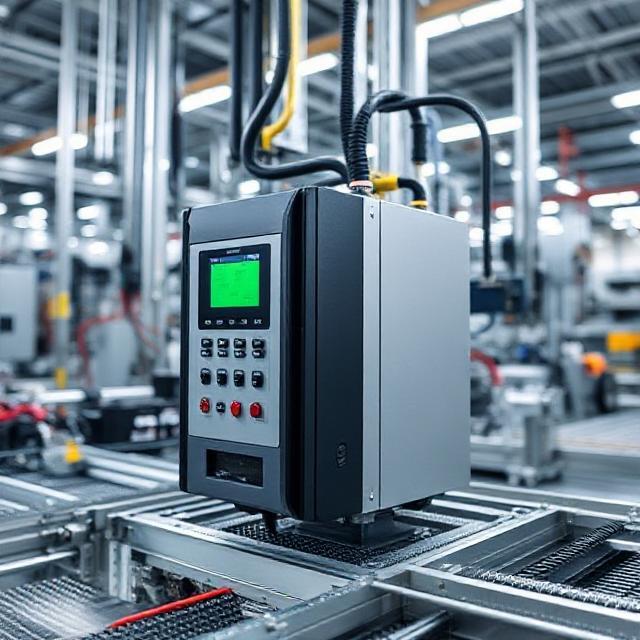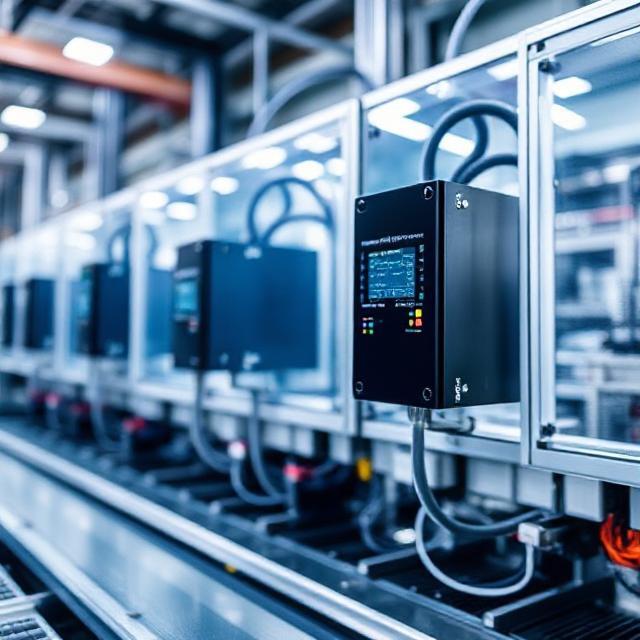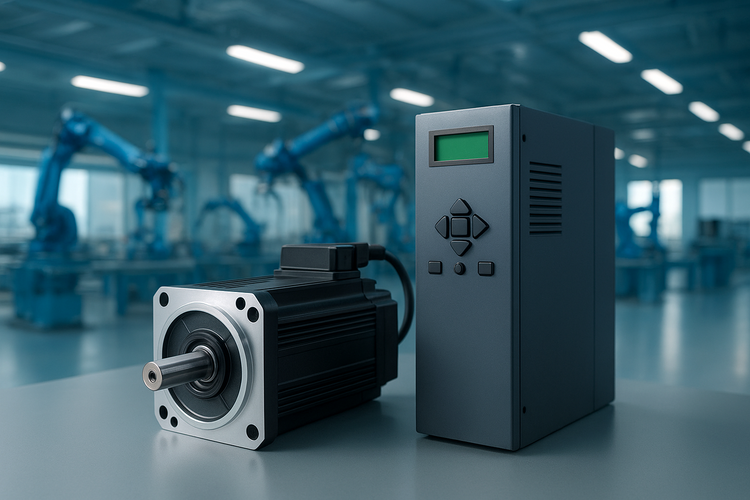In today’s competitive industrial world, manufacturers are constantly seeking ways to improve productivity, and minimize environmental impact. One of the key areas that can significantly influence efficiency in manufacturing is energy consumption. This is where servo drives come into play. These Smart Components help control motion in machines and equipment with high precision while reducing energy waste. In this blog, we will explore how servo drives contribute to energy efficiency in smart manufacturing and why they are essential for modern industries.
What Are Servo Drives?

A servo drive is an electronic device that controls a servo motor. Servo motors are motors that can accurately control position, speed, and torque. The servo drive receives commands from a controller and adjusts the motor’s operation accordingly. Unlike traditional motors, servo motors work efficiently because they only use the amount of energy required for a specific task.
Servo drives are widely used in various industrial applications, including robotics, CNC machines, conveyor systems, packaging machines, and automated assembly lines. By ensuring precise motion control, they reduce energy wastage and optimize the performance of machines.
Why Energy Efficiency Matters in Manufacturing
Energy costs are one of the largest operational expenses for manufacturing companies. With rising energy prices and increasing environmental regulations, improving energy efficiency has become critical. Energy-efficient manufacturing not only lowers costs but also reduces carbon emissions, contributing to a greener and more sustainable industry.
Some of the challenges manufacturers face include:
- High energy consumption of traditional motors
- Wastage during idle or low-load operations
- Inefficient acceleration and deceleration processes
- Heat losses and overuse of cooling systems
Servo drives address these challenges by providing precise control over motor functions, leading to reduced energy consumption.
How Servo Drives Improve Energy Efficiency
1. Precise Motion Control
One of the main advantages of servo drives is their ability to control motor movements precisely. Traditional motors often run at constant speed, regardless of the load, wasting energy. Servo drives, on the other hand, adjust the motor speed and torque according to the actual load requirements. This reduces unnecessary energy use, especially in applications with varying loads.
2. Regenerative Braking
Many modern servo drives are equipped with regenerative braking technology. When a servo motor slows down or stops, the kinetic energy generated is fed back into the system instead of being wasted as heat. This recovered energy can be reused, significantly improving overall efficiency.
3. Reduced Idle Energy Consumption
In many manufacturing processes, machines spend a lot of time idling. Traditional motors continue to consume energy even when not performing work. Servo drives allow motors to enter low-power or standby modes when idle, cutting down energy use and lowering operational costs.
4. Optimized Acceleration and Deceleration
Servo drives enable smooth acceleration and deceleration of motors. Unlike conventional systems that may use sudden starts and stops, servo-driven systems minimize energy spikes, reduce mechanical stress, and maintain consistent energy efficiency.
5. Adaptive Load Management
Advanced servo drives can monitor load conditions in real-time and adjust power output accordingly. For example, if a conveyor belt is running lighter than usual, the servo drive reduces motor power, saving energy without compromising performance.
Benefits of Energy-Efficient Servo Drives in Smart Manufacturing
1. Lower Operational Costs
Energy-efficient servo drives reduce electricity consumption, which directly lowers operational costs. Over time, the savings can be substantial, especially in large-scale industrial operations.
2. Enhanced Productivity
Servo drives not only save energy but also improve production efficiency. Their precise control allows machines to operate faster and with better accuracy, reducing errors and downtime.
3. Longer Equipment Life
By controlling acceleration, deceleration, and torque, servo drives reduce mechanical stress on motors and other components. This extends the lifespan of machinery, reducing maintenance costs and downtime.
4. Environmentally Friendly Operations
Reducing energy consumption also reduces greenhouse gas emissions. Manufacturers adopting energy-efficient servo drives contribute to sustainability and align with global environmental standards.
5. Compatibility with Smart Factory Systems
Servo drives can be integrated with Industry 4.0 technologies, including IoT sensors, AI-based predictive maintenance, and real-time energy monitoring systems. This integration allows manufacturers to track energy usage, optimize performance, and continuously improve efficiency.
Applications of Servo Drives in Energy-Efficient Manufacturing
1. Robotics
Industrial robots require precise motion control for tasks like welding, painting, and assembly. Servo drives ensure robots move efficiently and only use the necessary energy, reducing waste.
2. CNC Machines
Computer Numerical Control (CNC) machines use servo drives to control tool movement accurately. Energy is conserved because the machine only uses power proportional to the cutting or shaping workload.
3. Conveyors and Material Handling
Conveyor systems often run continuously, consuming a lot of energy. Servo drives allow conveyors to adjust speed according to load, stop automatically when no material is present, and recover energy through regenerative braking.
4. Packaging and Printing Machines
These machines require precise timing and speed adjustments. Servo drives optimize motion, reduce energy consumption, and improve output quality.
5. Automated Assembly Lines
Servo-driven assembly lines adapt to product variations, optimizing motor usage. Energy-efficient motion control reduces waste while maintaining high production quality.
Choosing the Right Servo Drive for Energy Efficiency

Selecting the right servo drive is essential for maximizing energy efficiency. Here are some factors to consider:
- Load requirements: Ensure the drive can handle variable loads efficiently.
- Energy recovery features: Look for regenerative braking or energy feedback options.
- Integration capabilities: The drive should support IoT or factory automation systems for real-time monitoring.
- Efficiency rating: High-efficiency drives reduce energy loss during operation.
- Size and scalability: Choose a drive that fits current needs but can be scaled for future expansion.
Monitoring and Optimizing Energy Usage
Implementing energy-efficient servo drives is just the first step. Continuous monitoring and optimization are key to maintaining efficiency. Manufacturers can:
- Use smart sensors to track energy consumption in real-time.
- Analyze data to identify energy-intensive processes.
- Adjust speed, torque, and motion profiles based on operational demands.
- Implement predictive maintenance to prevent energy loss due to wear and tear.
Future Trends in Energy-Efficient Servo Drives
The future of servo drives in smart manufacturing is bright. Here are some trends to watch:
1. AI-Driven Energy Optimization
Artificial Intelligence (AI) can analyze production data and optimize servo motor operations automatically, reducing energy usage while improving productivity.
2. IoT-Enabled Servo Drives
Internet of Things (IoT) connectivity allows servo drives to communicate with other machines, enabling coordinated energy-saving strategies across the factory.
3. Advanced Regenerative Systems
Next-generation servo drives will feature more efficient energy recovery systems, capturing almost all kinetic energy during deceleration or braking.
4. Renewable Energy Integration
Servo drives will increasingly integrate with renewable energy sources like solar or wind, allowing factories to operate with minimal reliance on traditional power grids.
Energy efficiency is no longer optional in modern manufacturing; it is essential for reducing costs, improving productivity, and protecting the environment. Servo drives are at the forefront of this energy revolution, providing precise motion control, reducing energy waste, and supporting smart manufacturing initiatives. By investing in energy-efficient servo drives, manufacturers can achieve a sustainable, cost-effective, and highly productive industrial environment.
With ongoing advancements in AI, IoT, and regenerative technologies, the role of servo drives in energy-efficient manufacturing will only grow stronger. Manufacturers who adopt these technologies today will lead the smart factories of tomorrow.

